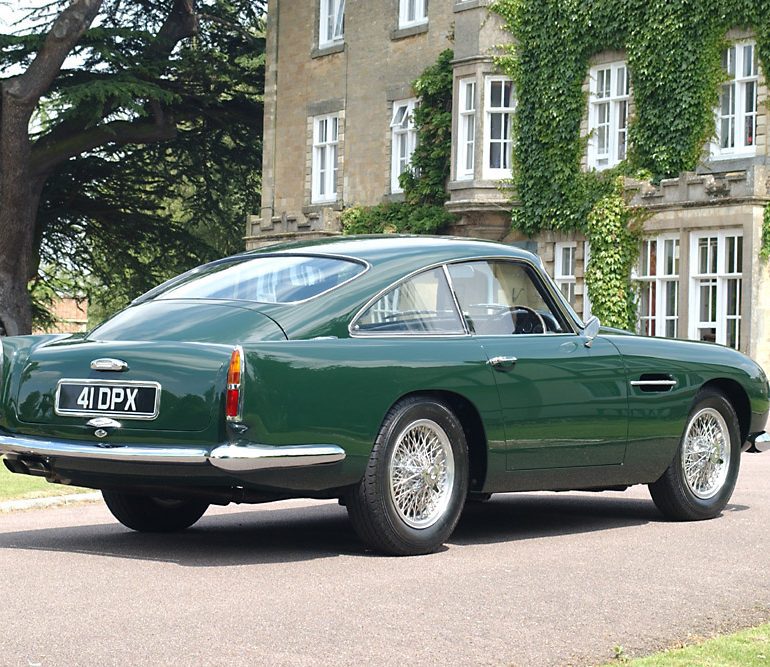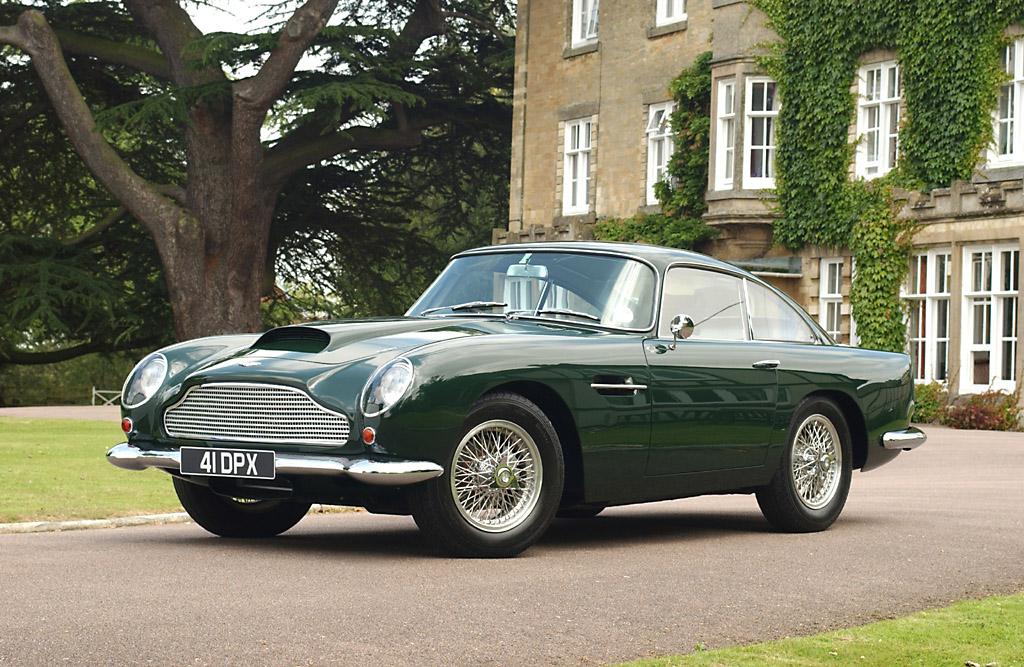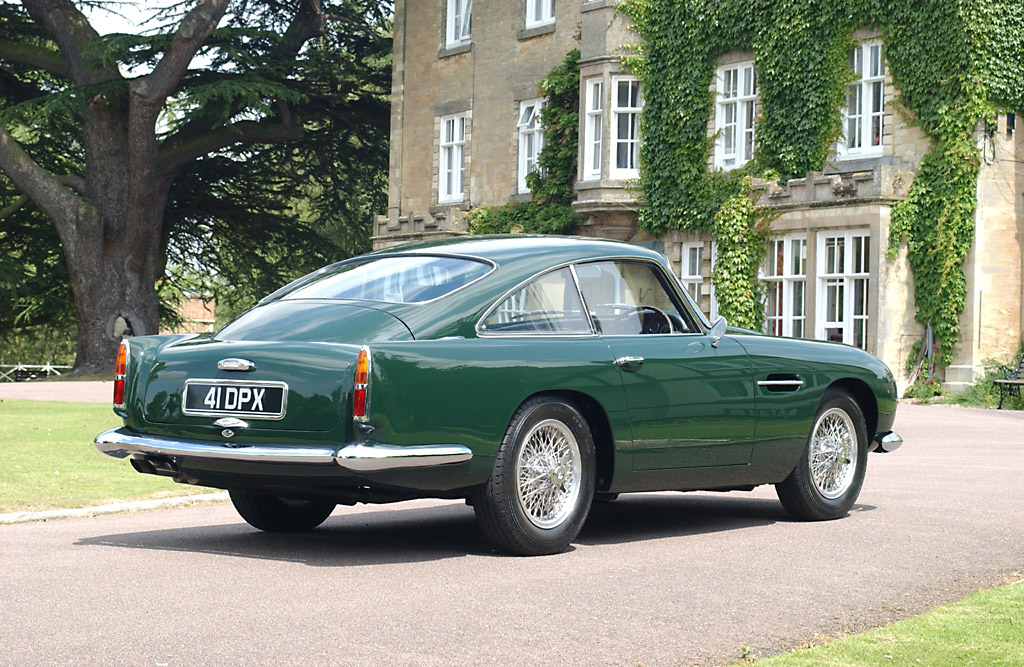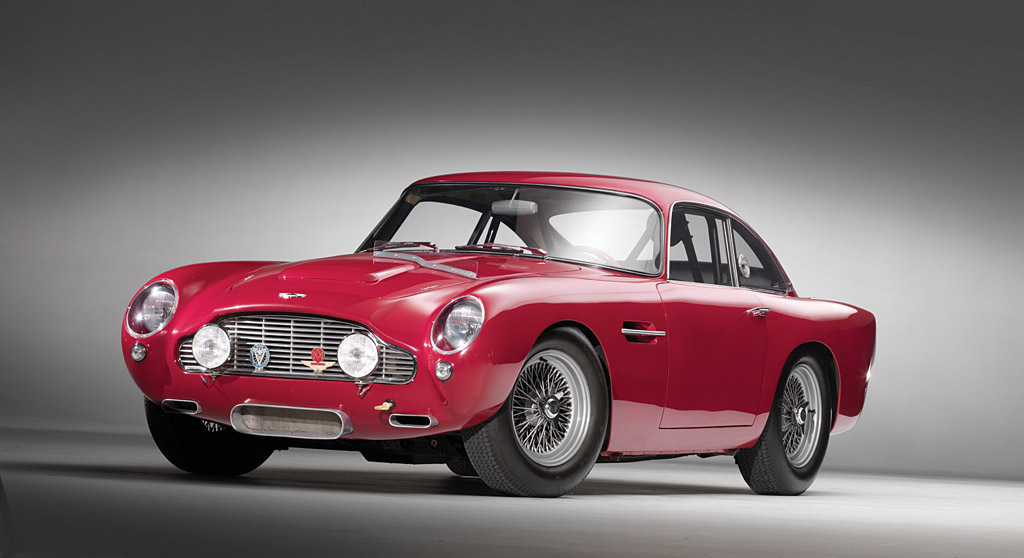1960→1964 Aston Martin DB4 GT
A year after the DB4 fastback was released at the 1958 Paris Motor Show a more potent version called the GT was prepared to stay ahead of competition such as the Ferrari 250 SWB. It was smaller, lighter and more powerful compared to the standard model, but was also offered in full road-going trim for special clients.
Starting from a good platform, Aston Martin stripped, shrunk and gave the DB4 more power. Many of these developments were tested on a prototype known as SP199/1. This is the same car that won its debut race at Silverstone and raced alongside the Le Mans-winning DBR1 at the 24 Hours of Le Mans.
Externally, the it was noticeably distinct, having a 5-inch shorter wheelbase, new front cooling vents and a much larger hood scoop. Like the SP199/1 prototype, closed headlights were fitted. Inside, the rear seat was gone as well as any unnecessary items like the roll-down window frames were gone. Unlike many race cars of the period, the Aston Martin was still very well appointed inside with Connolly leather upholstery and Wilton wool carpeting.
A large weight savings came from the use of 18-gauge aluminum on the Superleggera body which was licensed from Touring of Milan. It used a skeletal steel tube framework to support an aluminum body. In total, a regular DB4 GT was roughly 45 kg (100 lbs) lighter than the standard road-car, but Aston Martin prepared a lightweight version for racing teams like Essex Racing.
In top spec the Inline-6 engine was tuned to offer 302 bhp thanks to a twin-spark setup and triple dual-choke Webers. This was a substantial increase over the standard 240 bhp DB4.
The public got a first view of the DB4 GT at the 1959 London Motor Show. After a few years development and a 75 car production run, the GT was replaced by the more purpose built GT Zagato. The Zagato version was a faster, more lightweight car. Also, six DB4 Series III Vantages were fitted with the GT spec engine and are sometime referred to as DB4 GTs.
Lightweights
Of the 75 Aston Martin DB4 models made, around six were delivered in a Factory Lightweight specification. Ex-Aston Martin Chief Engineer describes these cars as “ordered and built as lightweights from the start were so described on their build sheets and completed by the Competition Department or in some cases by the Service Department, depending on the work load of each group at that time. The “Bespoke” GT chassis were modified to lightweight spec after build completion, but before their final assembly by the service shop.”
Chassis 0124/R, 0125/R, 0167/L and 0168/L were built as Lightweight models from their build sheet, but many were later adopted with many of the Factory Lightweight components which included the following upgrades:
*Aluminum Alloy Replacement of Door, bonnet & boot framing, Wheel arches, Engine compartment side panels, Upper half of firewall, cockpit floor sections, Rear parcel shelf, rear riser panels, Battery & tool box lids, Rear boot pan, Front kick panels, Drive shaft tunnel.
*Chassis hole cutting in front cross-member, front side rails, Rear Watts Linkage brackets
Brake line brackets
*Weight reduction by elimination of Radio, speakers & heater, Glovebox lid, One of two bonnet stay rods, Clock, Windshield washer bottle, pump & fittings, Bumpers & over-riders
In Detail
| type | Series Production Car |
| production years | 1960 – 1964 |
| released at | 1959 London Motor Show |
| built at | Newport Pagnell, England |
| body stylist | Carrozzeria Touring |
| coachbuilder | Aston Martin |
| production | 75 |
| price £/td> | £4,534 |
| engine | Twin Spark, Inline-6 |
| position | Front Longitudinal |
| aspiration | Natural |
| ignition | Twin Plug |
| block material | Aluminum Alloy |
| valvetrain | DOHC 2 Valves / Cyl |
| fuel feed | Weber 45 DCOE Carburetors |
| displacement | 3670 cc / 224.0 in³ |
| bore | 92 mm / 3.62 in |
| stroke | 92 mm / 3.62 in |
| compression | 9.1:1 |
| power | 225.2 kw / 302.0 bhp @ 6000 rpm |
| specific output | 82.29 bhp per litre |
| bhp/weight | 237.8 bhp per tonne |
| torque | 366.07 nm / 270.0 ft lbs @ 5000 rpm |
| redline | 6000 |
| body / frame | Aluminum over Steel Chassis |
| driven wheels | Front Engine / RWD |
| front tires | 6.00×16 |
| rear tires | 6.00×16 |
| front brakes | Unassisted Girling Discs |
| rear brakes | Unassisted Girling Discs |
| steering | Rack & Pinion |
| f suspension | Double Wishbones w/Coil Springs, Damper Units, Anti-Roll Bar |
| r suspension | Live Axle w/Trailing Arms, Coil Springs, Damper Units, Trailing Links, Watts Linkage |
| curb weight | 1270 kg / 2800 lbs |
| wheelbase | 2362 mm / 93.0 in |
| front track | 1372 mm / 54.0 in |
| rear track | 1372 mm / 54.0 in |
| length | 4362 mm / 171.7 in |
| width | 1676 mm / 66.0 in |
| height | 1321 mm / 52.0 in |
| transmission | 4-Speed Manual |
| gear ratios | 2.49:1, 1.74:1, 1.25:1, 1.00:1 |
| final drive | 3.54:1 |
| top speed | ~245 kph / 152.2 mph |
| 0 – 60 mph | ~6.2 seconds |
| 0 – 1/4 mile | ~14.0 seconds |
| key drivers | Roy Salvadori, Stirling Moss, Jim Clark, Innes Ireland |







